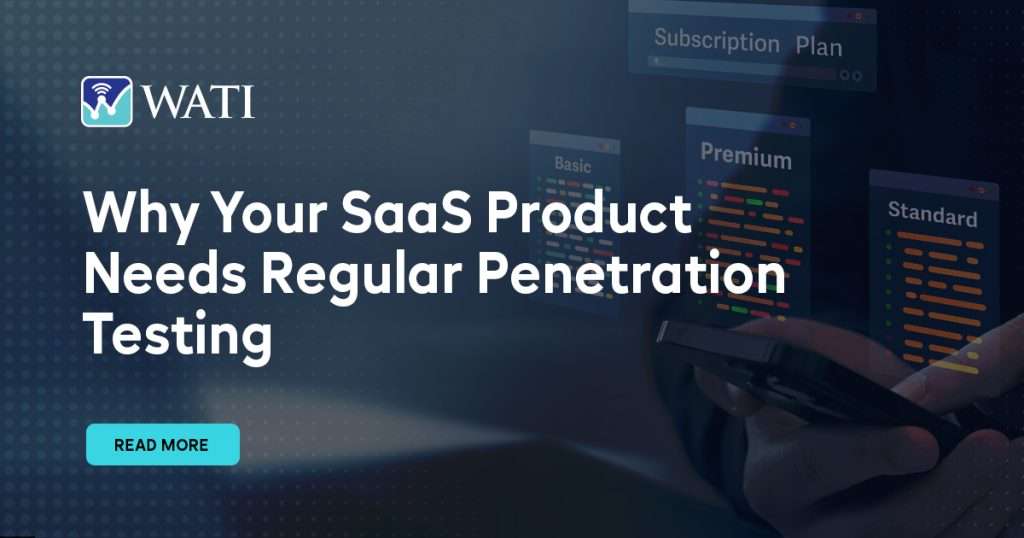The manufacturing industry is undergoing rapid digital transformation, leveraging IoT, AI, and advanced automation to optimize production processes. However, with this shift comes a surge in cyber threats, making manufacturing plants prime targets for cyber espionage and attacks. Vulnerability Assessment and Penetration Testing (VAPT) has emerged as a critical cybersecurity measure to safeguard manufacturing operations from these threats. This article explores the importance of VAPT in manufacturing, its role in protecting against cyber espionage, and best practices for implementation.
The Growing Cyber Threat Landscape in Manufacturing
Why Manufacturing Plants Are Targets
Manufacturing plants handle sensitive data, including intellectual property, production designs, and trade secrets. This makes them attractive to cybercriminals and state-sponsored actors looking to steal proprietary information or disrupt operations. Moreover, the integration of Operational Technology (OT) with IT systems has expanded the attack surface, exposing plants to a broader range of cyber threats.
Common Cybersecurity Risks
- Cyber Espionage: Attackers infiltrate systems to steal intellectual property or gain a competitive advantage.
- Ransomware Attacks: Cybercriminals encrypt critical systems and demand payment to restore them.
- Disruption of Operations: Malware can cause downtime in production lines, leading to significant financial losses.
- Supply Chain Attacks: Compromising third-party vendors to infiltrate the primary manufacturing network.
- Insider Threats: Employees or contractors with malicious intent exploiting vulnerabilities.
What Is VAPT?
Definition and Key Components
VAPT is a dual-layered cybersecurity assessment that identifies and mitigates vulnerabilities in a system. It consists of:
- Vulnerability Assessment: A systematic review to identify weaknesses in software, hardware, and network systems.
- Penetration Testing: Simulating real-world attacks to exploit identified vulnerabilities and evaluate the effectiveness of security measures
Importance of VAPT in Manufacturing
Manufacturing plants rely on complex and often outdated systems that are difficult to secure. VAPT provides a proactive approach to:
- Detecting and mitigating vulnerabilities before attackers exploit them.
- Enhancing compliance with industry regulations such as ISO 27001 and NIST standards.
- Protecting sensitive intellectual property and operational systems.
Cybersecurity Challenges Faced by Manufacturing Plants
Increased Attack Surface
The adoption of IoT devices, cloud computing, and smart manufacturing technologies has significantly expanded the attack surface. Each connected device introduces a potential entry point for cybercriminals.
Intellectual Property Theft
Intellectual property, including product designs and trade secrets, is often the backbone of a manufacturing business. Cyber espionage poses a severe threat, with attackers leveraging advanced persistent threats (APTs) to exfiltrate sensitive data.
Legacy Systems
Many manufacturing plants operate on outdated or unpatched systems, making them vulnerable to cyberattacks. These legacy systems often lack the ability to integrate modern security measures.
Lack of Cybersecurity Awareness
A significant portion of cybersecurity breaches stems from human error. Employees unaware of phishing scams or social engineering tactics can inadvertently open the door to attackers.
Why VAPT is Crucial for Manufacturing Plants
Proactive Vulnerability Management
VAPT allows manufacturing companies to identify security flaws in both IT and OT environments proactively. By addressing vulnerabilities before they can be exploited, plants can significantly reduce their risk exposure.
Simulating Real-World Attacks
Penetration testing simulates real-world attacks, providing insights into how an adversary might breach the system. This helps manufacturing plants prioritize their security efforts based on actual risks.
Securing Operational Technology (OT)
Unlike traditional IT systems, OT systems such as SCADA and ICS are critical for manufacturing operations. VAPT ensures these systems are safeguarded against attacks that could disrupt production.
Enhancing Compliance
Regulatory frameworks such as ISO 27001, NIST, and GDPR often mandate regular security assessments. VAPT helps manufacturing plants meet these compliance requirements and avoid potential penalties.
Safeguarding Intellectual Property
VAPT helps secure intellectual property by identifying vulnerabilities that could expose sensitive data to cyber espionage.
Maintaining Business Continuity
Cyberattacks can halt production lines, leading to significant financial losses. VAPT minimizes the risk of such disruptions by fortifying the plant’s digital infrastructure.
How VAPT Protects Against Cyber Espionage and Attacks
Simulating Cyber Espionage Scenarios
VAPT involves testing systems as if attackers were targeting intellectual property. This approach uncovers vulnerabilities that could be exploited for espionage, allowing manufacturers to implement robust countermeasures.
Identifying Weak Points
A comprehensive vulnerability assessment scans the entire network, identifying outdated software, misconfigured devices, and other security gaps. These insights guide the penetration testing process.
Penetration Testing in Action
Penetration testing involves ethical hackers attempting to exploit vulnerabilities in systems, networks, and applications. This provides a realistic understanding of the security posture and areas that need improvement.
Strengthening OT Security
Manufacturing plants heavily rely on OT systems, which are often more vulnerable than IT systems due to outdated technology. VAPT ensures these systems are protected against threats like ransomware and malware.
Continuous Security Monitoring
Cyber threats evolve rapidly. Regular VAPT assessments help manufacturing plants stay ahead of emerging risks, ensuring ongoing protection.
Best Practices for Implementing VAPT in Manufacturing Plants
Partner with Experts
Engage a cybersecurity services provider with expertise in VAPT for manufacturing environments. Their knowledge of industrial systems ensures a thorough assessment.
Conduct Regular Assessments
Cybersecurity is not a one-time effort. Regular VAPT assessments are essential to keep up with evolving threats and newly discovered vulnerabilities.
Integrate IT and OT Security
Adopt a holistic approach that includes both IT and OT systems. Securing only one aspect leaves the other vulnerable.
Invest in Employee Training
Train employees to recognize phishing emails, social engineering tactics, and other common cyber threats. Human error remains a leading cause of cybersecurity breaches.
Implement a Patch Management System
Ensure that all software, hardware, and firmware are regularly updated with the latest security patches.
Document and Prioritize Vulnerabilities
After a VAPT assessment, prioritize remediation efforts based on the severity and potential impact of identified vulnerabilities.
Conclusion
As manufacturing plants continue to embrace digital transformation, the need for robust cybersecurity measures has never been greater. VAPT provides a proactive approach to identifying and addressing vulnerabilities, protecting against cyber espionage, and ensuring business continuity. By investing in regular VAPT assessments, manufacturing plants can safeguard their intellectual property, comply with industry regulations, and maintain operational resilience.
Cyber threats are a growing concern for the manufacturing industry, but with the right cybersecurity strategies, they can be effectively mitigated. Partnering with a trusted VAPT services provider ensures that your manufacturing plant is equipped to face the challenges of a connected, digital world.
Take the first step toward securing your manufacturing plant by scheduling a VAPT assessment today. Don’t wait for an attack to reveal your vulnerabilities—be proactive and protect your business now.
Frequently Asked Questions (FAQs)
Vulnerability Assessment and Penetration Testing (VAPT) is a dual-layered security process used to identify, assess, and exploit vulnerabilities in an organization’s IT infrastructure. For manufacturing plants, which rely on industrial control systems (ICS) and IoT devices, VAPT is crucial to prevent cyber espionage, production halts, and intellectual property theft. By identifying security weaknesses proactively, VAPT ensures robust defense against evolving threats.
Manufacturing plants often operate with legacy systems, minimal encryption, and poorly segmented networks. These weaknesses are frequently targeted by hackers using ransomware, phishing, or Advanced Persistent Threats (APTs). Additionally, increased digitization through Industry 4.0 has exposed more endpoints and devices, making these plants attractive targets for cybercriminals and nation-state actors alike.
VAPT services helps detect and mitigate threats such as ransomware attacks, unauthorized access to SCADA systems, firmware vulnerabilities in IoT devices, supply chain compromises, and insider threats. It simulates real-world attack scenarios to test the plant’s defenses and ensure that every critical asset, from OT systems to connected smart devices, is protected.
Yes. Cyber espionage can lead to the theft of confidential blueprints, trade secrets, and manufacturing processes, directly affecting competitiveness. Moreover, attackers can exploit system vulnerabilities to sabotage production lines, alter product quality, or cause costly downtime. This makes early detection through VAPT a necessity, not an option.
A vulnerability assessment identifies and categorizes known security issues in a system, while penetration testing goes a step further by actively exploiting those vulnerabilities to evaluate the impact and risk. In manufacturing, both components are essential—assessments provide a wide view of security gaps, and penetration tests simulate attacks to determine how far a threat actor could go.
Manufacturing plants should conduct VAPT assessments at least once a year or after major changes like new machinery integration, software upgrades, or network expansion. Frequent testing ensures that evolving vulnerabilities are detected early, and compliance with industry standards such as ISO/IEC 27001 and NIST frameworks is maintained.
Absolutely. Legacy systems often lack modern security features like encryption, authentication protocols, and regular patch updates. Hackers exploit these outdated technologies to gain unauthorized access, pivot across networks, and disrupt critical operations. VAPT helps identify these weak points and guides manufacturers in reinforcing outdated infrastructure.
VAPT supports compliance with industry regulations such as ISO 27001, NIST SP 800-82, and IEC 62443 by identifying vulnerabilities, ensuring risk mitigation, and maintaining audit readiness. Many regulatory frameworks require periodic testing and threat detection capabilities—both of which are core elements of a strong VAPT program.
Yes. IoT and IIoT devices in smart factories often have default credentials, unpatched firmware, and open ports that are exploitable. VAPT evaluates the entire ecosystem of connected devices to identify weaknesses in communication protocols, device misconfigurations, and software vulnerabilities, thereby ensuring end-to-end security across the smart manufacturing setup.
Manufacturers should choose a VAPT provider with deep experience in OT and ICS environments, knowledge of manufacturing protocols (e.g., Modbus, DNP3), and the ability to simulate real-world threats without disrupting operations. Look for certifications like OSCP, CEH, or CREST, along with a proven track record in the manufacturing domain.



